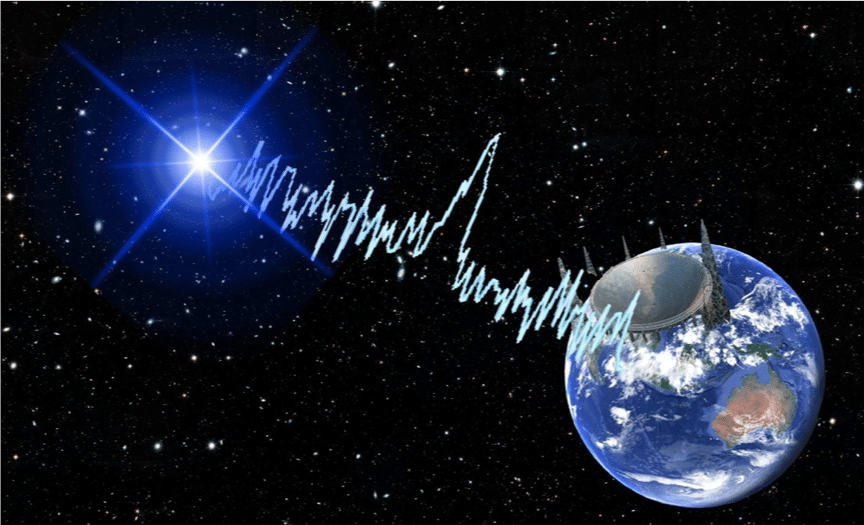
National and international context
The next years will be rich of new discoveries in the GRB and GW fields thanks to the multi-wavelength and multi-messanger data set that will be obtained by new or upgraded facilities. Of particular interest will be the new observing runs (O4 and O5) of the LIGO-Virgo-Kagra interferometers, and the launch of SVOM in 2022.
In this scenario, a coordinations of the observations obtained with ground based telescopes will be fundamental.
GRBs as probes of the high-redshift universe
Currently, one of the major issues of extragalactic astronomy is to understand how the structures that we observe in the Universe have been formed and evolved. GRBs can be ideal tools to tackle galaxy evolution up to the highest redshifts. Indeed, LGRBs pinpoint faint star-forming galaxies up to the highest redshift, offering some unique advantages to probe the high-redshift Universe: 1. they are extremely bright at all redshift and their afterglow brightness is only marginally decreasing with redshift; 2. LGRBs are associated with star formation and can thus signal and trace star formation to the highest redshift; 3. the LGRB afterglow emission fades quite rapidly, offer the unique opportunity to investigate systematically (and in principle at any redshift) LGRB host galaxies both through the absorption lines seen in the afterglow spectra AND through photometric and spectroscopic observations of the host galaxies, after the afterglow has faded. These galaxies form a sample of faint, star-forming galaxies selected independently of their emission properties (independently of dust obscuration and independently of their brightness at any wavelength), and are therefore complementary to the samples built from galaxy surveys.
Hence it is possible to contribute to answer fundamental questions on galaxy evolution using GRBs to:
- retrieve information on the evolution of massive stars;
- trace the star-formation rate up to the highest redshift;
- study a population of faint star-forming galaxies mostly missed in high-redshift surveys but possibly contributing to reionization and being part of the bulk of the population of very high-redshift galaxies;
- combine the properties of neutral and ionized gas of faint star-forming galaxies, providing unique information on its physical state and its connection with the star-formation activity up to z > 6.
To this purpose a synergy between GRB detections from space and ground-based follow-up observations with the best instruments of the world is mandatory.
Credits: ESO/E. Pian/S. Smartt & ePESSTO/N. Tanvir/VIN-ROUGE Caption: Photometric and spectroscopic evolution ok kilonova AT2017gfo associated with the binary neutron star merger GW170817.
The detection by the Advanced LIGO-Virgo interferometers of GW from the merging of a BNS system (GW170807) associated with a SGRB (e.g.: Abbott et al. 2017a,b) and a kilonova opened the era of multi-messenger astrophysics. The observations of the kilonova associated with this event were the first ever for such explosions, and testified of heavy element production through r-process nucleosynthesis. The origin of the abundance of heavy elements in the universe is one of the open questions in astrophysics: multi-messenger observations seems to be a key to find the answer. Many are the questions opened by those GW-EM detections. Some examples:
• Are all binary neutron-star (BNS) mergers similar to GW170817 (also from the EM side)?
• What is the rate of these events?
• Are all BNS associated with SGRB?
• Are all SGRB associated with BNS?
• Which heavy elements are produced by r-process in kilonovae?
• Can we determine H0 with GW-EM detection?
Fast Radio Bursts (FRBs) cosmology
Fast radio bursts (FRBs), a promising new and mysterious astrophysical phenomenon, are a class of bright transients with millisecond durations detected at ∼GHz (Lorimer et al. 2007; Thornton et al. 2013). Although the physical origin of these intense short pulses has not been completely figured out so far, most of them have been detected with relatively large dispersion measures (DM) (greater than the maximum produced by the Milky Way) which suggests that they may occur at a cosmological distance, probably at distances of the order of gigaparsecs. Moreover, the event rate of this phenomenon inferred from observations is very high (∼10^3–10^4 per day all sky; Thornton et al. 2013; Champion et al. 2016). Along with recent rapid progress in localizing apparent one-off bursts, FRBs are considered to be a promising probe for studying cosmology and astrophysics. Some examples:
- DM (intergalactic medium part) is proportional to the cosmological distance and could averagely act as a distance indicator. Hence, the dispersion of a sample of localized FRBs could be used to constrain the cosmological parameters, measure the baryon content of the Universe, reveal the cosmic reionisation history, and so on.
- Time delay between images in strong gravitationally lensed FRB system can be precisely measured and they could be used to measure the cosmic expansion rate (and some other fundamental cosmological parameters) precisely.
- Millilensing effect of FRBs (bursts are distinguishable in millisecond scale) could be a direct and powerful method to detect stellar mass primordial black hole.
- Extragalactic FRBs, with their low frequency emissions, short time durations, and long propagation distances, are the most promising celestial laboratory so far for constraining the rest mass of the photon through the dispersion method.
